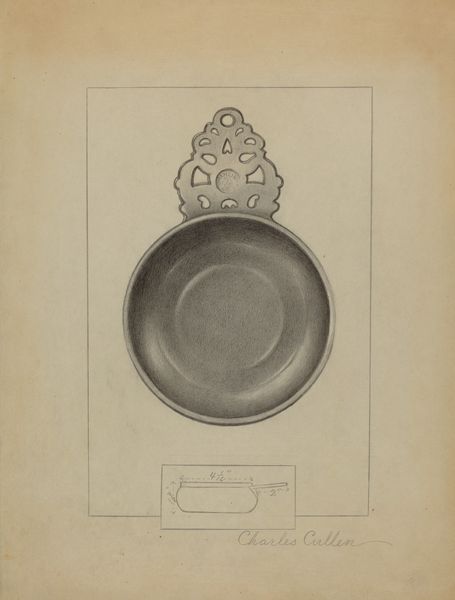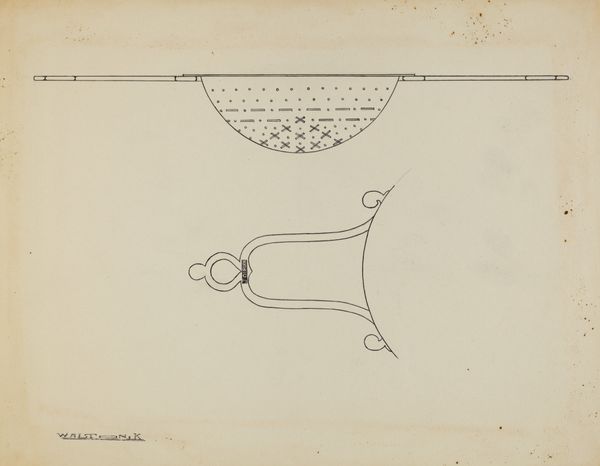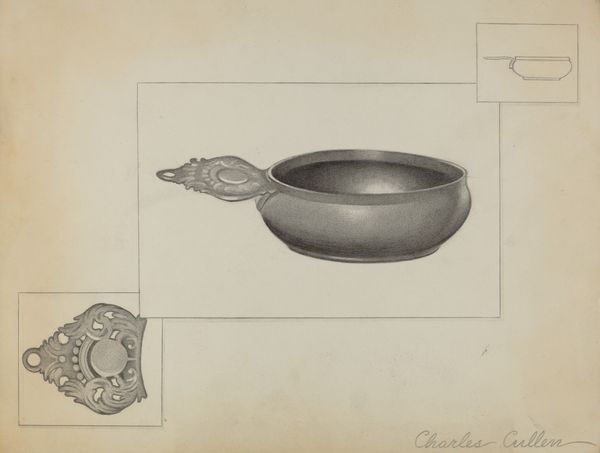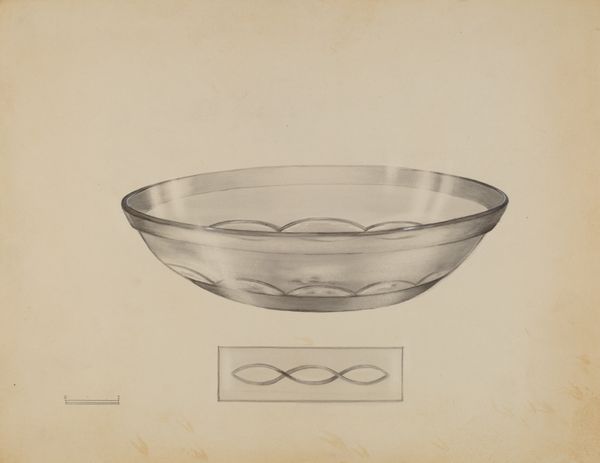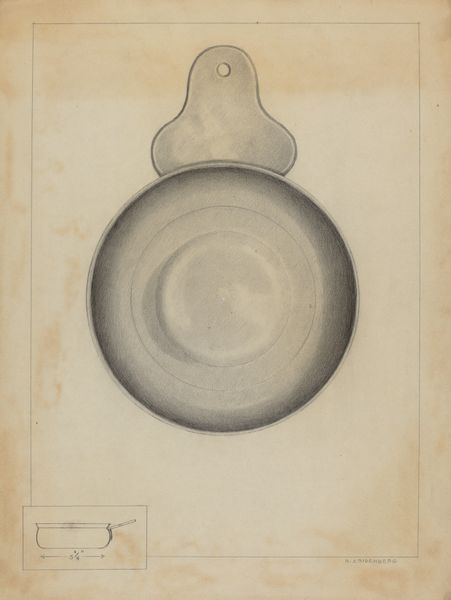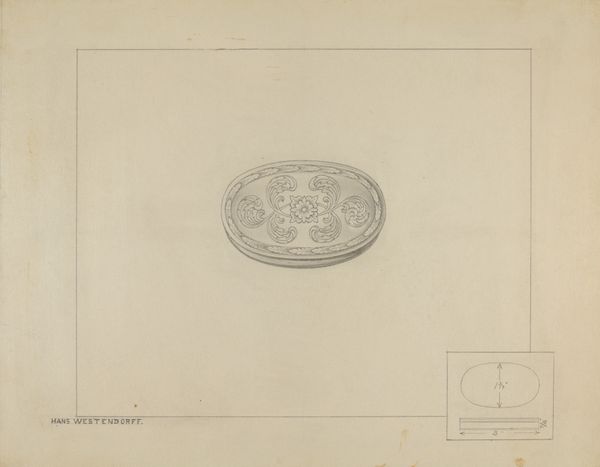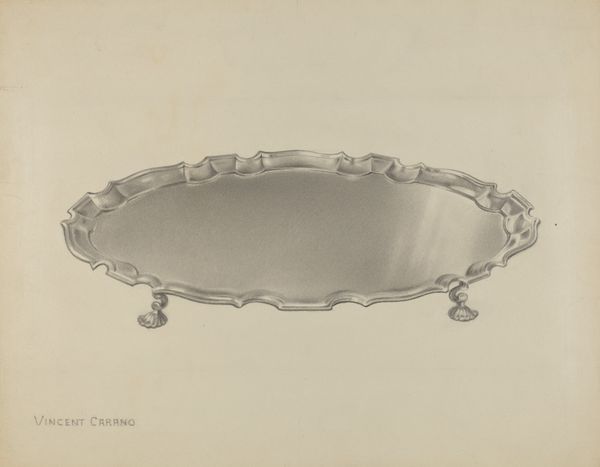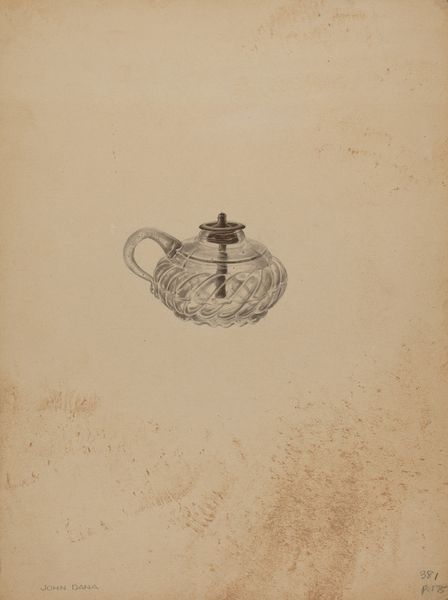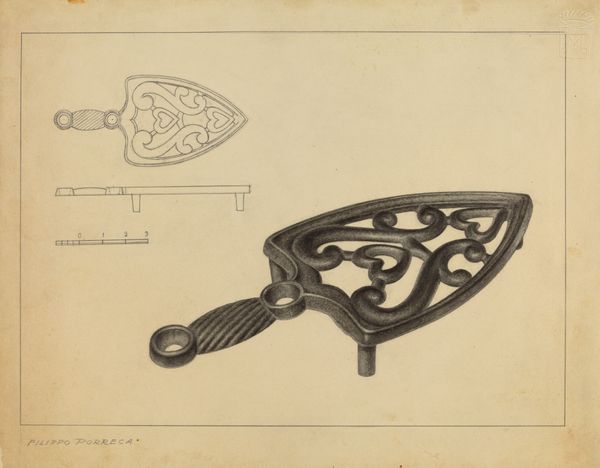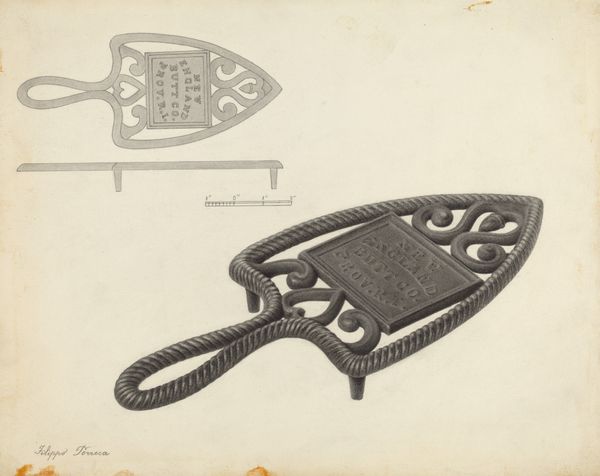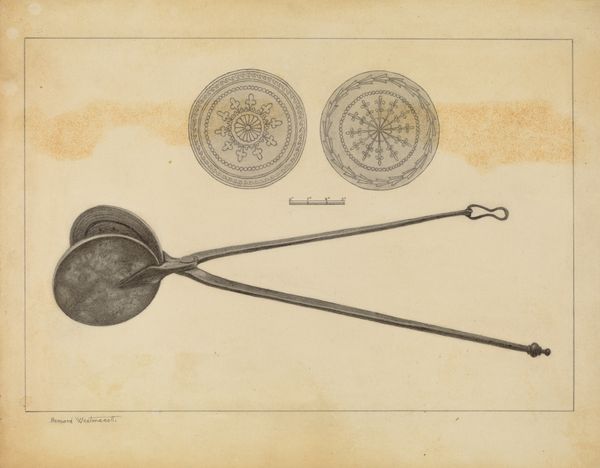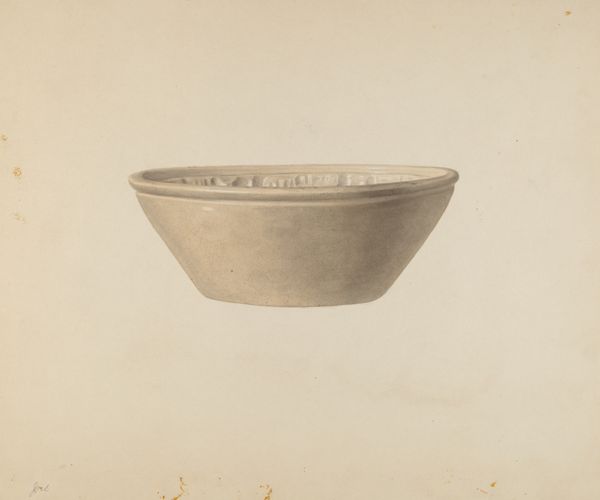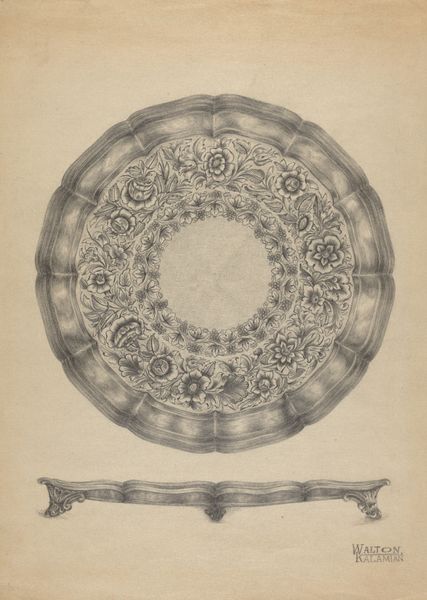
Dimensions: overall: 22.9 x 29.4 cm (9 x 11 9/16 in.) Original IAD Object: 10 1/2" long
Copyright: National Gallery of Art: CC0 1.0
Curator: This is Kalamian Walton’s "Silver Strainer," a pencil drawing on paper created around 1939. The drawing depicts, well, a silver strainer! Editor: There's a stillness to it, isn't there? It feels like an object plucked right out of someone's quiet, domestic life. So simple, and yet... so meticulously rendered. Like a memory carefully preserved on paper. Curator: Exactly! Walton’s choice of medium here is fascinating. Pencil on paper elevates this common household object to something worthy of contemplation. It asks us to consider the labour involved in creating even the simplest utensil. Editor: I wonder, did Walton love to cook? Because there is tenderness in that meticulousness. Or maybe they just liked really refined straining! I’m struck by how light plays off the curves. You can almost hear the gentle clinking sound of water passing through it. Curator: It’s all about process, right? The industrial means of production of the object itself is interesting. It serves as a gentle commentary on the machine age and how these mass-produced objects have permeated everyday life and even artistic depictions. Editor: Perhaps. I think I see something more human. There is something hauntingly beautiful in the everyday. That something so utilitarian can be imbued with such grace through close, careful looking. It becomes more than its function. Curator: Absolutely! By rendering it in painstaking detail, the artist is emphasizing that what often is overlooked actually plays a critical function in the material conditions of our living. Editor: It makes me want to stop and sketch my own kitchen tools! Maybe that's the point—to find the art in the ordinary. Thanks, Kalamian Walton, for reminding us to see. Curator: Thank you for your unique reflections, perhaps now the listener will go home and sketch the tools and implements that they take for granted. It makes me appreciate how process-driven pieces of art, often simple on the surface, possess immense cultural significance when interpreted critically.
Comments
No comments
Be the first to comment and join the conversation on the ultimate creative platform.
